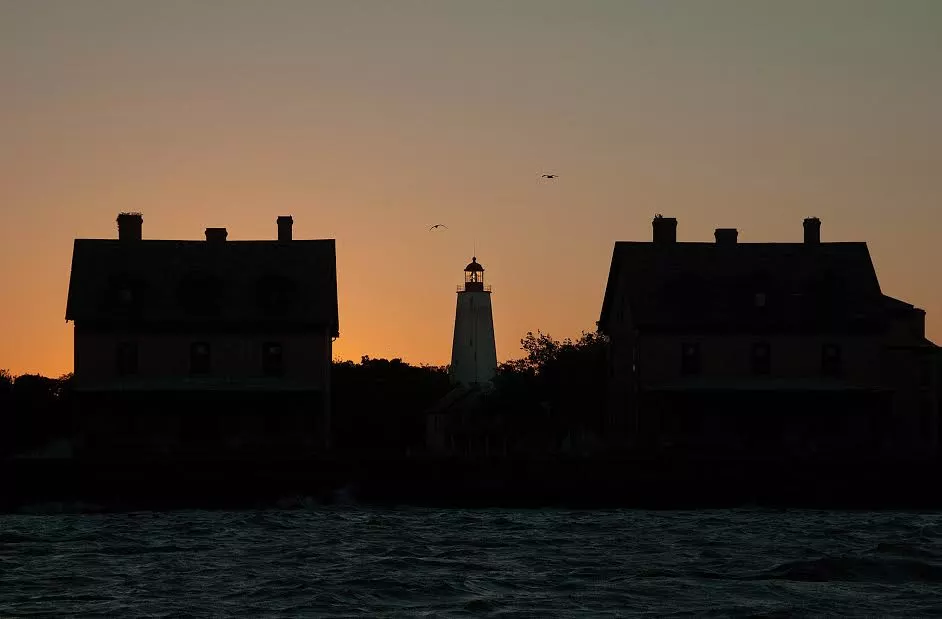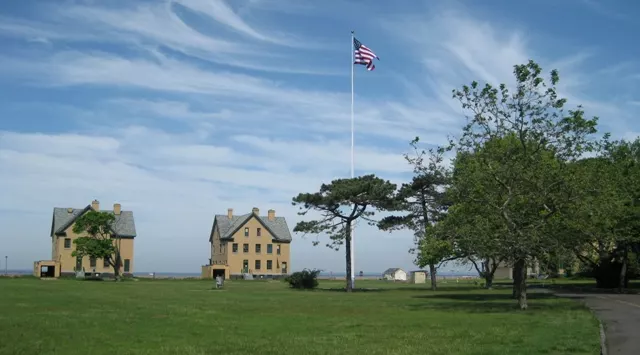SANDY HOOK, NJ – The long-stalled Fort Hancock revitalization project, a 25-year effort to breathe new life into the decaying historic district within Gateway National Recreation Area, has been officially terminated by the Trump administration.
The decision, enacted through Executive Order 14217, Commencing the Reduction of the Federal Bureaucracy, led to the dissolution of the Fort Hancock 21st Century Federal Advisory Committee on February 27, by Secretary of Commerce Jacob Burgum, effectively ending the National Park Service’s (NPS) ambitions to restore the area through adaptive reuse.
Fort Hancock, a historic military post on the Sandy Hook peninsula, has languished for decades, with most of its buildings—once bustling officers’ residences and operational structures—standing vacant and deteriorating.
The revitalization project, first proposed over 25 years ago, aimed to transform these structures into a vibrant community by leasing them to individuals and organizations willing to restore them. Despite the vision, progress has been minimal, leaving iconic sites like Officers’ Row and the Sandy Hook Proving Ground National Historic Landmark in a state of persistent decay.

The Fort Hancock 21st Century Federal Advisory Committee, established in September 2012 by the Department of the Interior, advises the NPS on how to preserve these historic buildings through creative reuse.
That effort succeeded a prior effort launched in the late 90s and early 2000s to bring businesses to the site.
The committee, which includes experts from real estate, business, education, and local government—including representatives from Highlands, Sea Bright, Middletown Township, Rumson, and Monmouth County—has held 40 public meetings since January 2013.
Yet, despite years of discussion and planning, few tangible results emerged, with most buildings still unoccupied and crumbling under the weight of time and neglect.

The Trump administration’s cancellation aligns with its broader push to shrink federal bureaucracy, as outlined in Executive Order 14217, signed earlier this year. The order mandates the termination of advisory committees deemed unnecessary, a move supporters argue streamlines government operations and cuts costs. The Fort Hancock committee’s dissolution marks the end of a federally backed effort that critics say had little to show for its quarter-century lifespan.
“This project has floundered for too long with no real progress,” said a spokesperson for the Department of Commerce, which oversees federal advisory committee actions under Burgum’s leadership. “The administration is prioritizing efficiency and redirecting resources to more pressing national needs.”
Local reactions are mixed. Some residents and preservationists lament the loss of a chance to save Fort Hancock’s historic charm. “These buildings are a piece of our heritage—Officers’ Row framing the Sandy Hook Lighthouse at sunrise is a sight worth preserving,” said John Harlan Warren, a photographer with the NPS. Others, however, see the cancellation as a pragmatic acknowledgment of a stalled initiative. “Twenty-five years, and it’s still a ghost town,” remarked a Middletown Township official who asked to remain anonymous. “Maybe it’s time to let it go.”
The NPS had envisioned a “viable, vital community” at Fort Hancock, but without the advisory committee’s guidance and amid the Trump administration’s cost-cutting agenda, that dream appears dead. For now, the historic post remains a silent relic, its future uncertain as the buildings continue to fade into disrepair.

